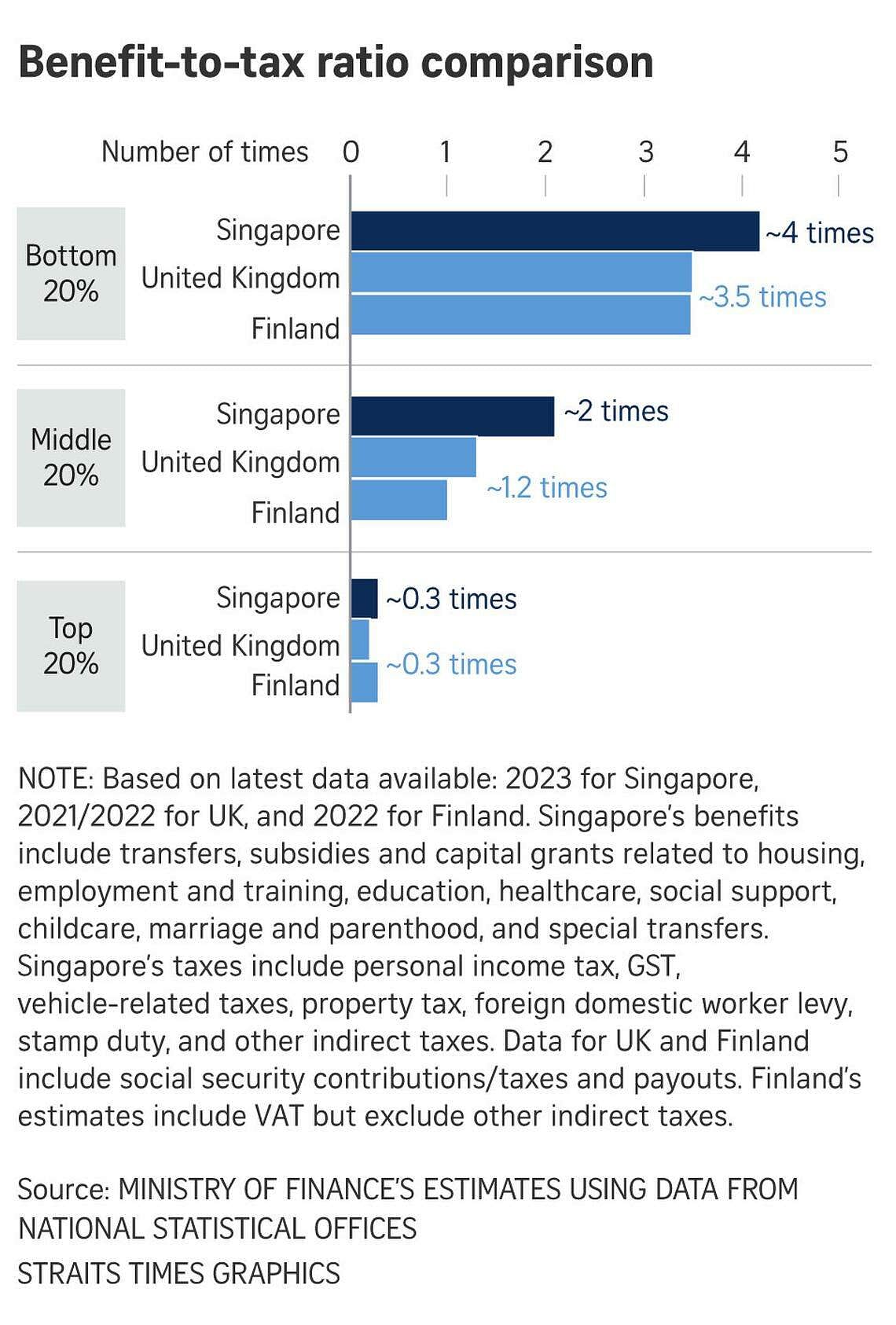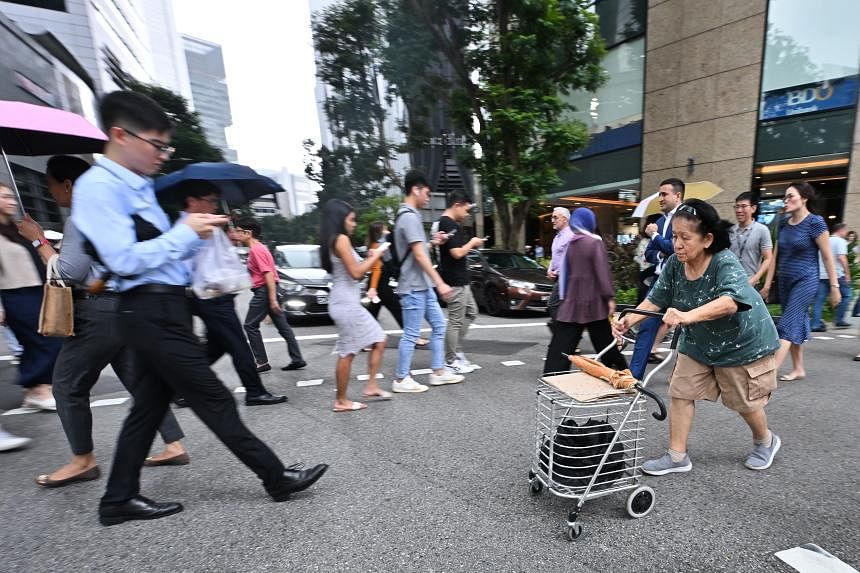SINGAPORE - Singapore’s fair and progressive fiscal system ensures that those with greater needs, particularly lower-income families, receive more assistance than what they pay in taxes, Deputy Prime Minister Lawrence Wong said on Feb 28.
The Government’s long-term and prudent approach has enabled it to keep expenditure at less than 20 per cent of gross domestic product (GDP) and hence keep the tax burden low, DPM Wong added as he addressed MPs’ comments on the Budget statement he had delivered on Feb 16.
DPM Wong, who is also Finance Minister, noted that Singapore does better than advanced economies such as the United Kingdom and Finland in terms of the benefit-to-tax ratio, especially for lower- and middle-income households.
For example, the lowest 20 per cent of households in Singapore receive about $4 in benefits for every dollar of tax paid, which is higher than the benefit-to-tax ratio of about 3.5 in the UK and Finland.
The middle 20 per cent of Singapore’s households receive about $2 for every dollar of taxes paid, more than the UK’s benefit-to-tax ratio of 1.2.
Meanwhile, the top 20 per cent of households here receive about 30 cents for every dollar paid in taxes, similar to Finland’s benefit-to-tax ratio of about 0.3.
DPM Wong added that the benefits cited in these figures do not include other intangible benefits such as access to quality education, healthcare and housing.

During the Budget debate on Feb 28, several MPs, including Mr Liang Eng Hwa (Bukit Panjang), Mr Louis Chua (Sengkang GRC) and Leader of the Opposition Pritam Singh (Aljunied GRC), sought clarifications on the potential impact of the BEPS 2.0 global framework.
BEPS, or Base Erosion and Profit Shifting, are tax planning strategies used by multinational enterprises that artificially shift profits to locations with no or low tax rates, and where the company has no or little economic activity.
Singapore is implementing a minimum effective tax rate of 15 per cent for large multinational enterprise (MNE) groups from January 2025, in line with Pillar Two of the BEPS 2.0 framework.
However, this means the Republic will no longer be able to offer traditional tax incentives to attract such companies.
In response, DPM Wong said that based on the Organisation for Economic Cooperation and Development’s (OECD) estimates, investment hubs could see a corporate income tax revenue gain ranging from about 17 per cent to 38 per cent, which translates to a revenue gain of about $5 billion to $11 billion per year for Singapore.
He also noted that economies like Hong Kong and Switzerland, which are also investment hubs like Singapore, have estimated their revenue gains at $1.7 billion and $2.4 billion, respectively, which are much lower than the OECD’s estimates.
“These data points are suggestive of what the range for Singapore could be – anywhere from $2 billion to $11 billion. But we are really not sure where we will end up because there are so many unknowns,” he said.
DPM Wong also emphasised that these figures have not taken into account how MNEs may respond and the possibility of their activities moving out of Singapore, which would reduce the country’s tax base.
He added: “What we are doing is to engage the MNEs better to understand how they are likely to respond, especially taking into account some of the moves we have made in this Budget, and we will provide our own revenue estimates in due course.”
Any revenue impact from the Pillar Two moves will only materialise in the Financial Year 2027, he noted.
DPM Wong also agreed with MPs like Mr Chua and Associate Professor Jamus Lim (Sengkang GRC) that the point of BEPS 2.0 is to shift the balance to favour governments and get MNEs to pay more taxes.
However, the reality is that MNEs have bargaining power, and “governments around the world are all finding ways to favour them and getting them to invest”, he said, citing the United States’ $2 billion grant to semiconductor chipmaker GlobalFoundries as well as Japan’s latest subsidy of $6.5 billion for fellow chip manufacturer Taiwan Semiconductor Manufacturing Co.
“We are not in the same league, but we have to play a smart game so as not to lose ground and to anchor important investments here,” he said.
This is why the Refundable Investment Credit (RIC) scheme was introduced in Budget 2024 to update the Republic’s investment promotion toolkit, and the Government also committed to spending more to support new investments, research and innovation activities, he said.
The RIC scheme is a new tax credit scheme that aims to support high-value and substantive economic activities. It includes a refundable cash feature.
Activities in support of the green transition and those to do with new innovation and research and development are some of the investments eligible for the scheme, as is the setting up or expansion of manufacturing facilities.
“These moves are absolutely necessary so that we remain in the race for quality investments and create good jobs for Singaporeans,” DPM Wong said.
“This is not an academic exercise. This is about the lives and livelihoods of Singaporeans, and we will do whatever is necessary to safeguard this, especially in a world where competition will only get tougher.”
Editor’s note: This article has been edited for accuracy.


